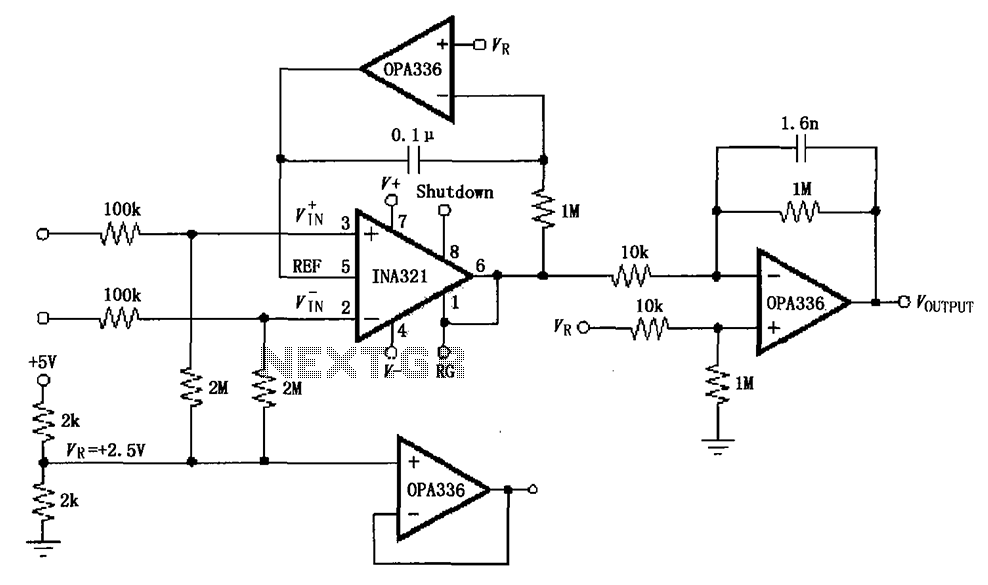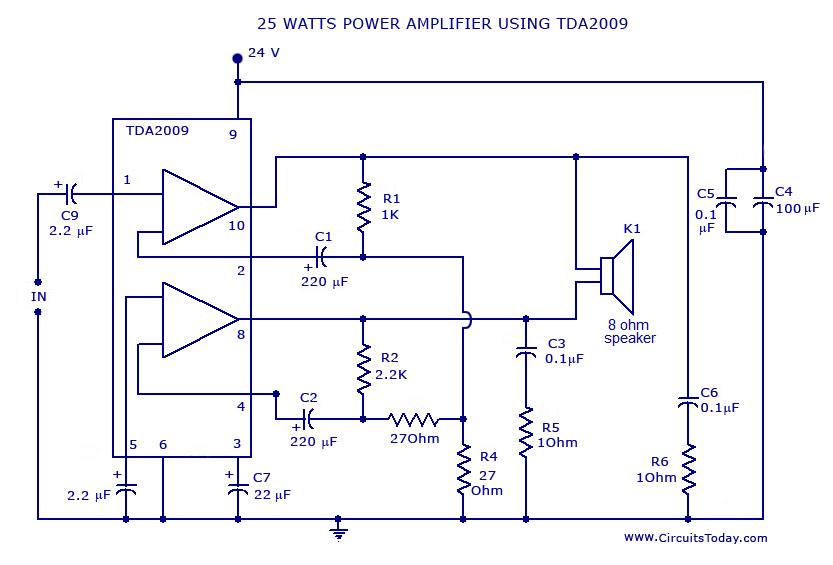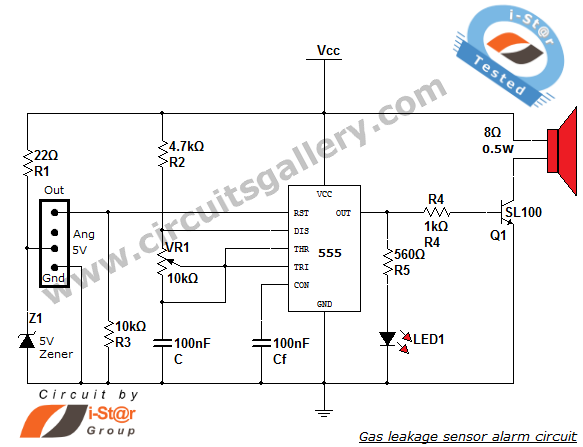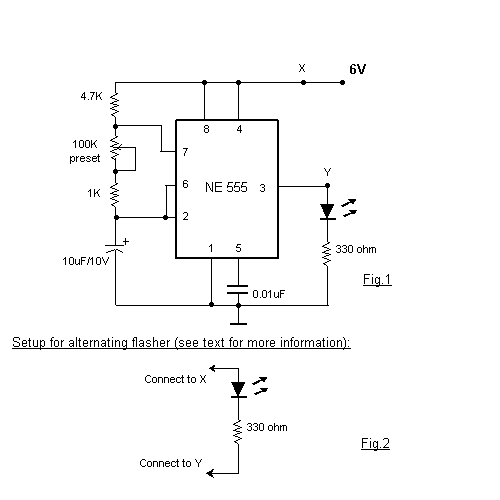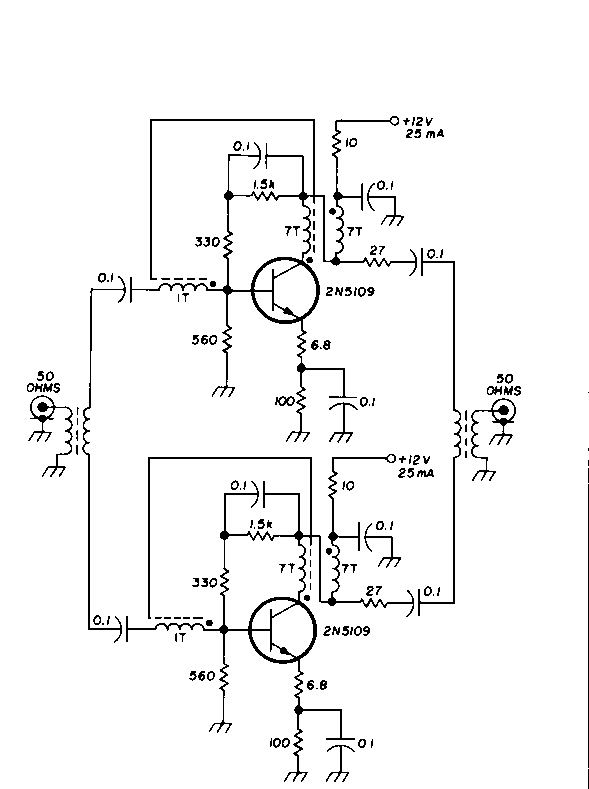
simple 555 amplifier

The 555 timer can function as an amplifier, operating similarly to pulse-width modulation. The component values lead the 555 to oscillate at approximately 66 kHz, a frequency to which the speaker does not respond. Instead, the speaker reacts to the average DC value of the modulated output, illustrating the concept of pulse-width modulation. The chip generates significant heat and is intended for brief demonstrations.
The 555 timer IC is a versatile device widely used in various electronic applications, including as a pulse-width modulation (PWM) generator. In this configuration, it can amplify signals by modulating the width of the output pulses based on an input signal. The typical setup involves connecting the 555 timer in astable mode, where it continuously oscillates between high and low states, producing a square wave output.
For this application, the 555 timer is configured with specific resistor and capacitor values to achieve an oscillation frequency of approximately 66 kHz. The frequency is determined by the formula:
\[ f = \frac{1.44}{(R1 + 2R2) \times C1} \]
where \( R1 \) and \( R2 \) are the resistances connected to the discharge and threshold pins, respectively, and \( C1 \) is the timing capacitor. The output from the 555 timer will be a square wave that alternates between high and low states at the specified frequency.
In this scenario, the output frequency is high enough that most audio speakers will not respond directly to the oscillation. Instead, they react to the average DC level of the modulated output signal, effectively demonstrating the principles of pulse-width modulation. This principle allows for control of the power delivered to the speaker without generating audible noise at the modulation frequency.
It is essential to note that during operation, the 555 timer may generate considerable heat, especially when used for extended periods or with insufficient heat dissipation measures. Therefore, it is advisable to limit the usage duration to brief demonstrations to prevent overheating and potential damage to the IC.
Overall, this application of the 555 timer showcases its ability to perform as an amplifier through pulse-width modulation, providing a practical example of how modulation techniques can control power delivery in electronic circuits.The 555 can be used as an amplifier. It operates very similar to pulse-width modulation. The component values cause the 555 to oscillate at approx 66kHz and the speaker does not respond to this high frequency. Instead it responds to the average CD value of the modulated output and demonstrates the concept of pulse-width modulation.
The chip gets v ery hot and is only for brief demonstrations. 🔗 External reference
The 555 timer IC is a versatile device widely used in various electronic applications, including as a pulse-width modulation (PWM) generator. In this configuration, it can amplify signals by modulating the width of the output pulses based on an input signal. The typical setup involves connecting the 555 timer in astable mode, where it continuously oscillates between high and low states, producing a square wave output.
For this application, the 555 timer is configured with specific resistor and capacitor values to achieve an oscillation frequency of approximately 66 kHz. The frequency is determined by the formula:
\[ f = \frac{1.44}{(R1 + 2R2) \times C1} \]
where \( R1 \) and \( R2 \) are the resistances connected to the discharge and threshold pins, respectively, and \( C1 \) is the timing capacitor. The output from the 555 timer will be a square wave that alternates between high and low states at the specified frequency.
In this scenario, the output frequency is high enough that most audio speakers will not respond directly to the oscillation. Instead, they react to the average DC level of the modulated output signal, effectively demonstrating the principles of pulse-width modulation. This principle allows for control of the power delivered to the speaker without generating audible noise at the modulation frequency.
It is essential to note that during operation, the 555 timer may generate considerable heat, especially when used for extended periods or with insufficient heat dissipation measures. Therefore, it is advisable to limit the usage duration to brief demonstrations to prevent overheating and potential damage to the IC.
Overall, this application of the 555 timer showcases its ability to perform as an amplifier through pulse-width modulation, providing a practical example of how modulation techniques can control power delivery in electronic circuits.The 555 can be used as an amplifier. It operates very similar to pulse-width modulation. The component values cause the 555 to oscillate at approx 66kHz and the speaker does not respond to this high frequency. Instead it responds to the average CD value of the modulated output and demonstrates the concept of pulse-width modulation.
The chip gets v ery hot and is only for brief demonstrations. 🔗 External reference
